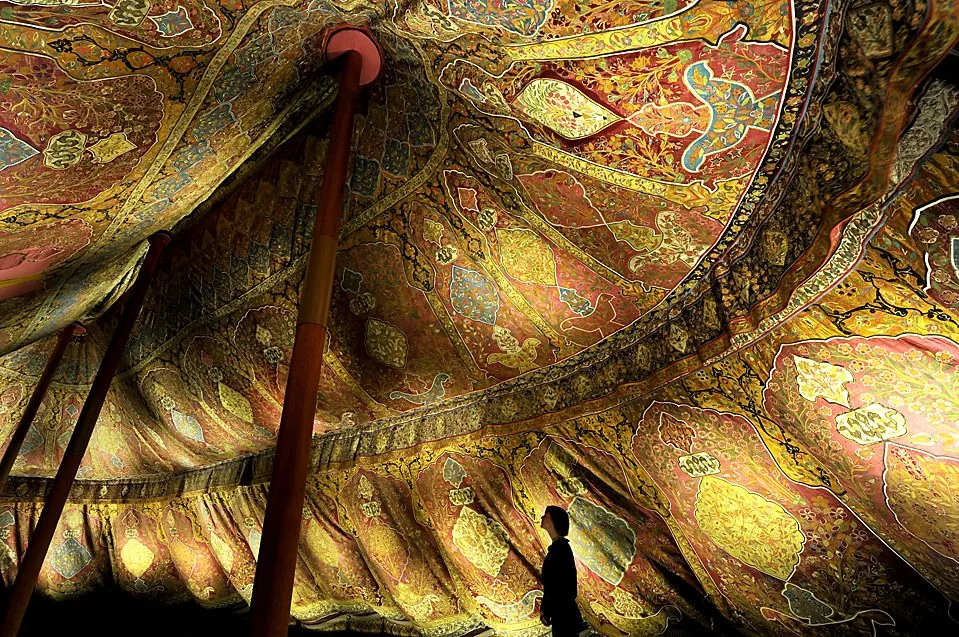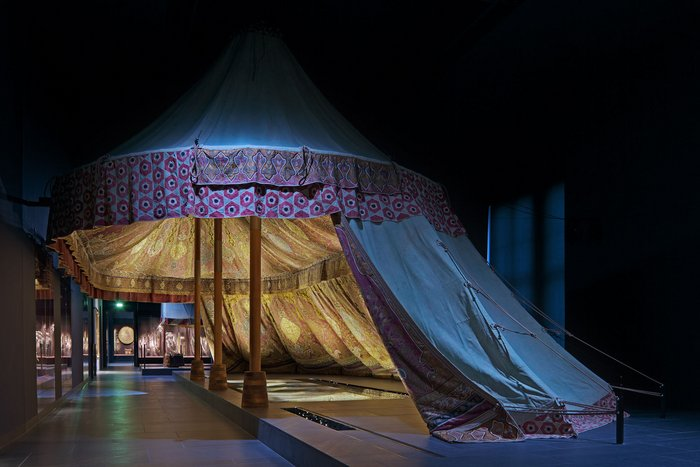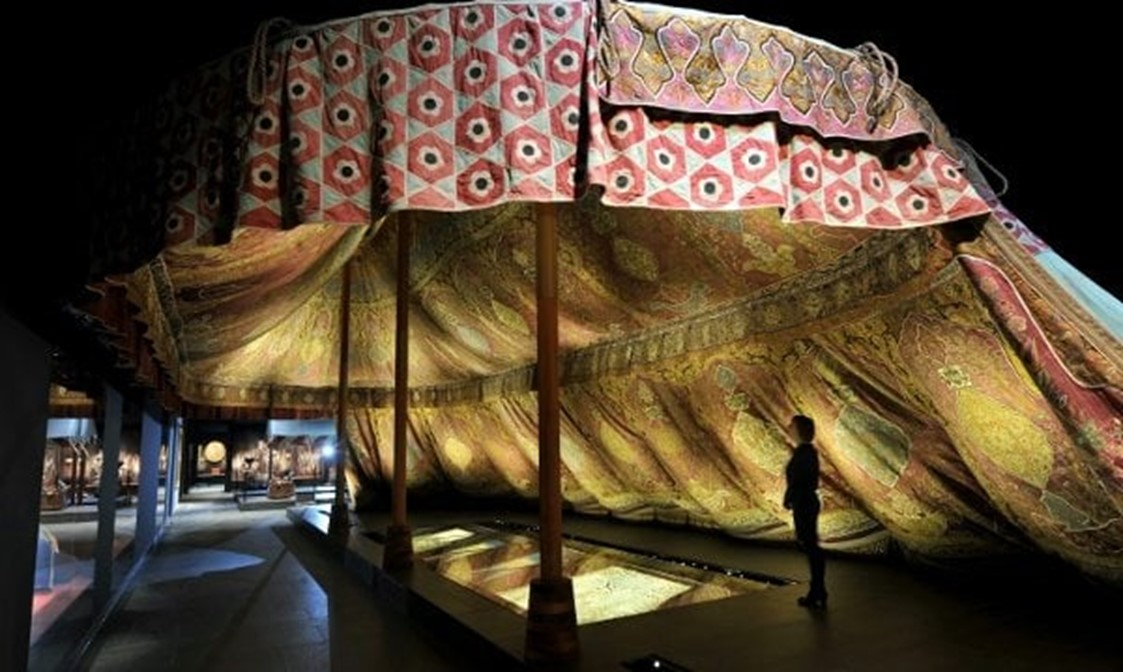Introduction
Nestled within the Turkish Chamber of the Dresden Armoury, an exquisite artifact from the 17th century stands as a testament to the opulence and craftsmanship of the Ottoman Empire: a three-mast tent made of silk and gilded leather. This stunning piece not only showcases the artistic prowess of its creators but also serves as a cultural bridge, highlighting the interactions and exchanges between the Ottoman Empire and European courts. In this blog post, we will delve into the rich history, intricate craftsmanship, and cultural significance of this unique tent, offering a glimpse into a bygone era of splendor and luxury.

The Historical Context
The 17th century was a period of significant expansion and consolidation for the Ottoman Empire, which, at its height, spanned three continents. The empire was known for its military prowess, administrative efficiency, and vibrant culture. One of the hallmarks of Ottoman cultural expression was the elaborate use of tents, which were not merely practical shelters but also symbols of power and prestige.
These tents were used in various settings, including military campaigns, ceremonial events, and as part of diplomatic gifts to foreign dignitaries. The tent currently housed in the Dresden Armoury is believed to have been acquired during one of the numerous military conflicts between the Ottoman Empire and European powers, possibly during the Great Turkish War (1683–1699) when the Ottomans laid siege to Vienna, or through subsequent peace treaties and exchanges.
The Tent: Structure and Materials
The three-mast tent in question is a marvel of Ottoman textile art, combining functionality with luxurious ornamentation. The tent is constructed primarily from silk, a material prized for its durability and sumptuous texture. Silk was not only a symbol of wealth but also an ideal medium for displaying intricate designs due to its fine weave and vibrant sheen.
Complementing the silk is the use of gilded leather, a material that further enhances the tent’s opulent appearance. Gilding, the process of applying a thin layer of gold leaf or powder to a surface, was a technique often used in Ottoman art to denote luxury and status. The gilded leather panels are likely adorned with intricate patterns, possibly including arabesques, floral motifs, and calligraphic inscriptions, all characteristic of Ottoman decorative arts.

Artistic and Craftsmanship Details
The tent’s design would have required the collaboration of various artisans, including textile weavers, leatherworkers, embroiderers, and metalworkers. The silk panels could have been woven with complex patterns using techniques such as brocading or weaving with gold and silver threads. The leather, once gilded, might have been tooled or embossed to add texture and depth to the decorative elements.
One of the striking features of Ottoman tents was their vibrant color palette, often dominated by rich reds, blues, greens, and golds. These colors were not only aesthetically pleasing but also symbolically significant, often associated with power, prosperity, and divine favor.

The Tent’s Journey to the Dresden Armoury
The Dresden Armoury, part of the Staatliche Kunstsammlungen Dresden (Dresden State Art Collections), houses an extensive collection of artifacts from various cultures, including a significant number of items from the Ottoman Empire. The Turkish Chamber, or Türckische Cammer, is dedicated to displaying these objects, which include weapons, textiles, and other luxurious goods.
The acquisition of the tent by the Dresden Armoury reflects the broader trend of European courts collecting Ottoman artifacts during the early modern period. These items were not only valued for their beauty and craftsmanship but also served as diplomatic gifts or war trophies, symbolizing the complex and often adversarial relationships between European states and the Ottoman Empire.
Cultural and Diplomatic Significance
The presence of such an elaborate Ottoman tent in a European collection highlights the cultural exchanges that occurred despite political and military conflicts. These exchanges were facilitated through diplomacy, trade, and even espionage, and they led to a fascination with Ottoman culture in Europe. This phenomenon, often referred to as “Turquerie,” saw European aristocrats incorporating Ottoman styles into their own decorative arts, fashion, and architecture.
The tent thus stands as a cultural artifact that transcends its original context, representing a moment of intersection between East and West. It offers a glimpse into how the Ottomans presented themselves to the world and how they were perceived by others.
Conservation and Display
The conservation of such an artifact involves meticulous care to preserve the delicate materials and vibrant colors. The Dresden Armoury employs advanced techniques in textile and leather conservation, ensuring that the tent remains in good condition for future generations. The display of the tent within the Turkish Chamber allows visitors to appreciate not only its aesthetic qualities but also its historical and cultural significance.
Conclusion
The 17th century Ottoman three-mast tent made of silk and gilded leather is more than just a piece of functional architecture; it is a work of art that encapsulates the grandeur and sophistication of the Ottoman Empire. Its presence in the Dresden Armoury serves as a reminder of the rich cultural exchanges that have shaped our history. As we admire its intricate designs and luxurious materials, we are also invited to reflect on the complex relationships between different cultures and the enduring legacy of artistic and diplomatic interactions.

